This website serves as a support for my application to the University of Porto Excellence Award in Scientific Research 2025.
I am a Full Professor at the Mechanical Engineering Department of the Faculty of Engineering of the University of Porto (FEUP), and I have established the Advanced Joining Processes Unit of the Institute of Science and Innovation in Mechanical and Industrial Engineering (INEGI), a research group mainly dedicated to the study of structural joining processes, such as adhesive bonding, welding and mechanical joining, joining of biological materials and also active in the design of advanced testing equipment. Additionally, it carries out research in pedagogical matters related to engineering education.
Research in these fields is organised into six different groups, all of which carry out cutting-edge research with disruptive work, supported by dissemination activities such as editing journals, organising conferences and technology transfer activities. All of these groups operate with an objective-based approach, without fixed schedules but with regular weekly meetings. These meetings are crucial to share experiences, assess progress and implement changes and correction in the work plans. These six groups are schematically presented in Figure 1.
 |
 |
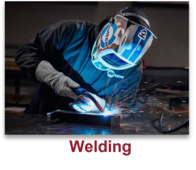 |
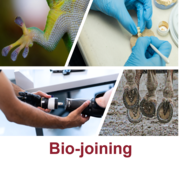 |
 |
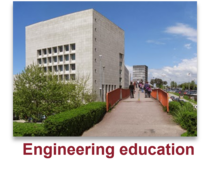 |
During my career as an academic, I have always targeted excellence innovation, achieved both through extensive dissemination and technological transfer activities. I received FEUP's Scientific Excellence Award in both 2013 and 2018 and I am Editor-in-Chief of seven peer-reviewed journals. Two of these journals are oriented towards general research dissemination in engineering: the UPorto Journal of Engineering, which provides a highly visible outlet for the scientific publication generated in the engineering field within the University of Porto and Discover Mechanical Engineering, an open access journal publishing research across all fields relevant to mechanical engineering.
An underlying philosophy of my research is that scientific production is fundamental for increasing visibility and promoting the establishment of industrial and academic interactions. Accordingly, we aim for high quality, consistent and impactful publications, demonstrated by more than 35 books, around 60 book chapters and 677 documents indexed in SCOPUS (465 in Q1 journals), which have received approximately 21500 citations and correspond to an h-index of 73 (SCOPUS). Of these, 531 scientific papers are indexed to the ISI database. I am ranked as the researcher with the second highest h-index in Portugal in Mechanical and Aerospace Engineering and I am within the top 2% most cited scientists in the world. During my research, I have received 28 awards in total and my students have garnered 18 awards (for best conference presentations and best dissertations, sponsored by Frezite, Vestas, Order of Engineers, etc.). Through extensive publication, the quality and the visibility of our work has generated significant industrial interest, which has fostered consistent growth and led to 65 different cooperation and consulting activities with industrial partners. We have also developed novel testing devices to support these activities, which resulted in 15 national and international patent requests. I currently lead a team of 35 researchers, have coordinated 34 national and international research projects and manage an annual budget of around 1 million euros 50% of which is sourced from industrial partners. I am also honoured to serve as evaluator of major European funding programmes (European Research Council, Pathfinder and Horizon) and to act as a NATO consultant for repair issues in aeronautical structures.
In this website you can find a detailed description of my activities as well as all of the supporting documents for my application to this award.
Lucas F M da Silva
Full Professor at Faculty of Engineering of the University of Porto
As stated in the introduction, the scientific work I carry out is divided into six main research areas, each managed by a research group. The following subsections provide detailed information on activities within these groups, listing key research aims, projects and dissemination and publication activities.

Adhesive bonding is the genesis of our research group, and for more than 20 years we have been performing extensive research work in adhesive characterization, working in partnership with major industrial players such as Aston Martin, Sika, John Deere, General Motors, Dupont, Embraer, Alstom, Volvo, Bosch and Honda, operating in the automotive, aerospace and railway sectors. These are all key clusters of the Portuguese economy and such cooperations have allowed us to bring knowledge and added value to these important sectors. We are also well-known for developing techniques that seek to improve the mechanical performance of bonded joints, which include hybrid, mixed-adhesive and graded joints. Graded joints locally vary the properties of the adhesive layer to minimize stress concentrations and maximize performance and were first experimentally demonstrated during a PhD thesis I have supervised. We have developed multiple solutions for bonding composite materials, increasing interlaminar strength through surface toughening methodologies or the use of fibre metal laminates. One key project we undertook in the use of fibre for naval construction (Fibre4Yards) has received the JEC World Composites Award 2025.
Advanced joint design concepts with complex materials can only be developed with the support of numerical modelling, using cohesive elements with experimentally determined mechanical properties and that can precisely predict damage and failure under varied conditions. We have created an advanced interface for Abaqus (SLJdesigner), which enables the creation of complex joint models in a simple and easy manner. Simpler analytical models have also been developed to facilitate joint design, such as those integrated in JointDesigner, an easy-to-use web application (shown in Figure 2) which we created and is used by the industry and academy alike, supporting practical classes at FEUP.
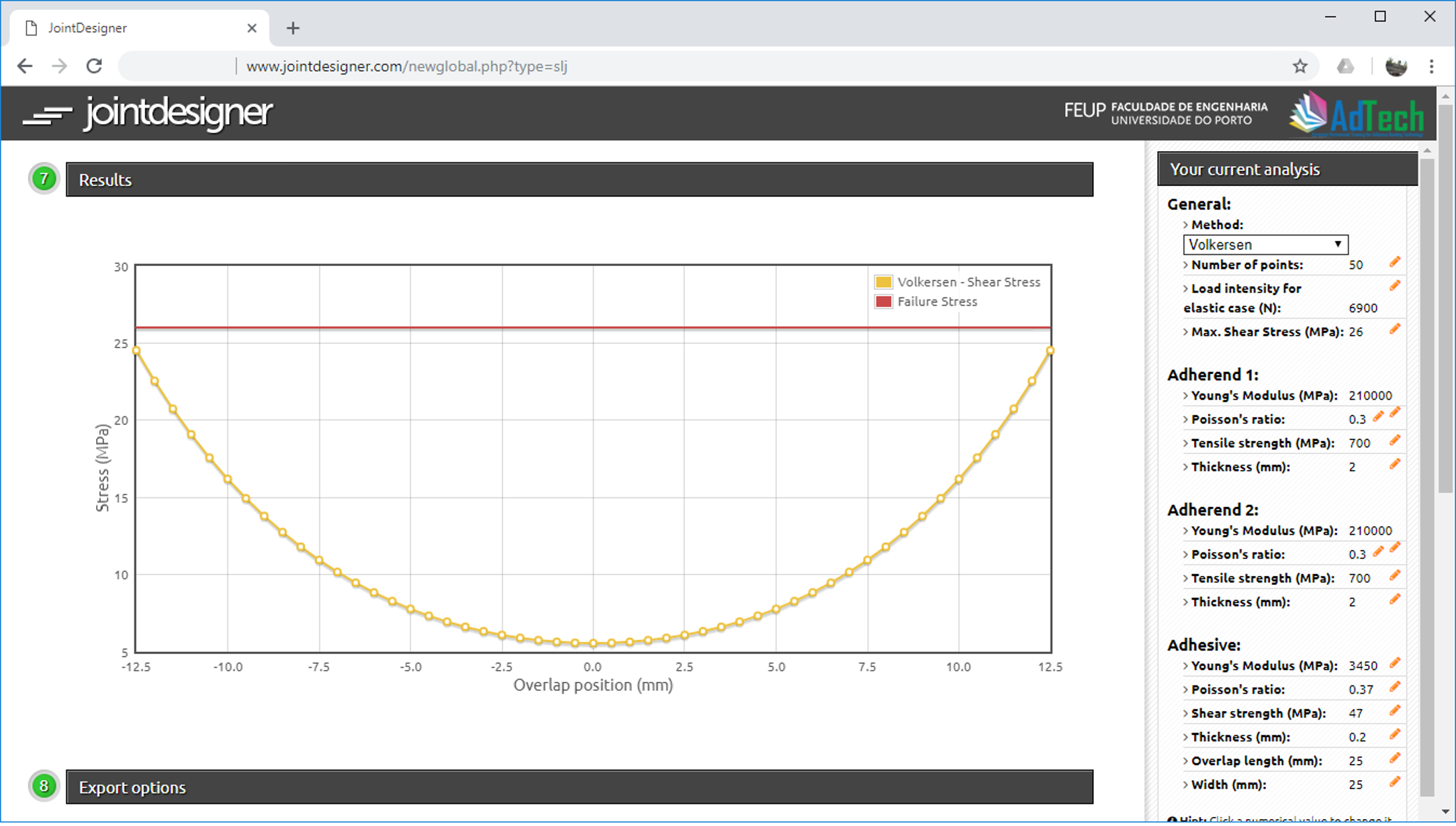
After mastering the design and optimization of joints for short-term conditions, we devoted our attention to durability, a major industrial concern. We have developed testing and design procedures that account for temperature, moisture, creep and fatigue loads in joint performance. In particular, we have carried out disruptive work on the subject of fatigue, developing two distinct design methodologies. One employs a fracture mechanics approach, modelling damage generated by fatigue in a joint and the resultant progression of the crack, known as the fatigue crack growth approach. The other approach is the total fatigue life approach, or S-N approach, allowing to determine the conditions that lead to crack initiation and the life of the joint. Both design methodologies are experimentally validated and implemented by many of our industrial partners, such as John Deere, Sika and Volvo.
We have also dedicated our studies to the topic of soft adhesives, which, as is the case for all other soft materials, represents a significant research challenge. In partnership with Bosch, we have studied the time dependent response of pressure sensitive adhesives (PSAs) under static and cyclic creep conditions. We have determined the response of PSAs under these complex loads and used this data for creating novel analytical models of adhesive performance.
Another issue that still limits wider use of adhesive bonding is the lack of effective non-destructive testing (NDT). In response, we are developing novel defect detection processes based on the response of defective joints to mechanical wave propagation, using machine learning to interpret the data generated (shown in Figure 3). We have achieved good results in the detection of weak adhesion, which is practically invisible to state-of-the-art NDT methodologies and thus a “holy grail” in this field. Process control is another hot topic in bonding, aiming to precisely model the flow and gap filling capabilities of an adhesive, currently working in partnership with Sabic to bring this capability to the industrial sector.
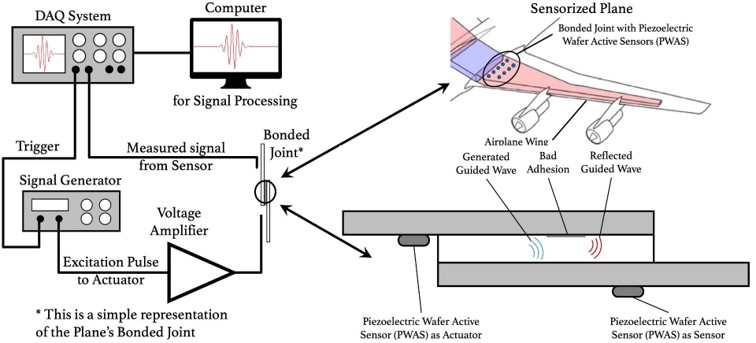
We are responsible for training personel that will work in high responsibility bonding operations, organizing the European Adhesive Bonder Course, which trains bonders according to the European Welding Federation standards. Furthermore, we also organize custom courses for companies, targeting specific needs. We have provided training for many partners, including General Electric Power, John Deere, Volkswagen and Petrobras, an activity which allows us to transfer all our research experience and knowledge directly to the industrial sector.
All our experience and impact in the subject of adhesive bonding is patent in the "Handbook of Adhesion Technology (2nd Edition)", a comprehensive reference book which I have authored and edited and is consistently the most cited publication in this field (Figure 4), according to Google Scholar.

I am Editor-in-Chief of a leading journal in the field of adhesive bonding, The Journal of Adhesion and another dedicated to material science and engineering, Proceedings of the Institution of Mechanical Engineers, Part L: Journal of Materials: Design and Applications. I am also very active at organizing international scientific conferences within these fields, including the International Conference on Structural Adhesive Bonding (AB), the International Conference on Industrial Applications of Adhesives (IAA) and the International Conference on Materials, Design and Applications (MDA).
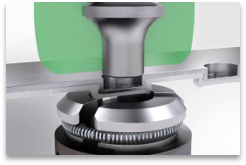
During the last five years, the group has evolved from being solely dedicated to just adhesive bonding and now covers multiple advanced joining processes, including joining by plastic deformation. This follows a desire to establish a structure similar to that employed by German research groups, such as that led by Professor Uwe Reisgen, which encompass all aspects of joining. This is especially relevant as the transition to cleaner mobility requires extensive joining of multimaterial structures. We are working to be a reference in all joining methods and we currently run projects studying novel processes, such as a highly efficient hole hemming joining process, capable of joining metals and polymers. This process is shown numerically in Figure 5.

This research has been leveraged to form a consortium, dedicated to automotive battery pack manufacturing, which seeks to find new methods to join cells, conductors and housings of high voltage batteries. This is a very active research topic, driven by the transition to electric vehicles and our contribution is to develop novel plastic deformation processes which simplify the battery manufacturing, improve performance and enable dissassembly and recycling, including the aforementioned hole hemming joining process which can also be used for electrical power conduction in busbars, as shown in Figure 6. This consortium, which we lead, is fully funded by its industrial partners, includes Sabic, Volvo, Momentive, and Aston-Martin, showing its high industrial relevance.
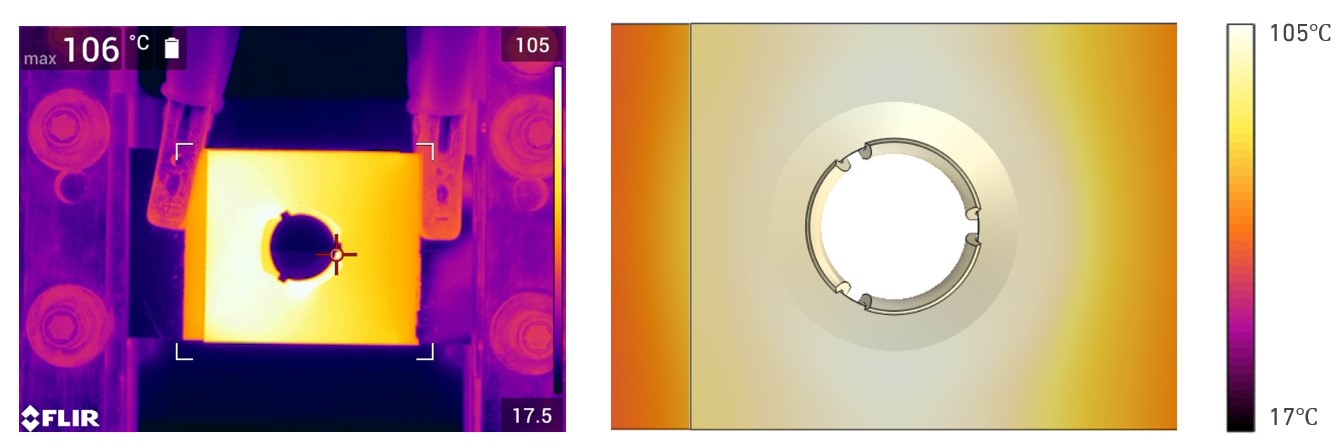
To further the dissemination activities in this field, I have also founded the Journal of Advanced Joining Processes which, while relatively recent, already consistently publishes high-quality works in all aspects related to joining, a Q1 journal with an impact factor of 4.1. I also organize the International Conference on Advanced Joining Processes (AJP), which gathers the leading experts in this field and has been crucial to establish new partnerships in this area.
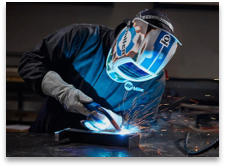
As described above, the research of the group was complemented in the last five years by carrying out research in multiple joining processes and this has led to the establishment of a new research group dedicated to welding. Currently, we focus our research mainly on laser and friction stir welding, addressing industry relevant topics such as intermetallic formation in dissimilar welding, the minimization of residual stresses and heat inputs, thin sheet hybrid joining and increasing the flexibility of joint design. Of special note are our recent works in the development of a novel buttering technique for friction stir welding of dissimilar metals, avoiding the formation of brittle intermetallic compounds. A short video of a thermal simulation of a friction stir welding process is shown in Figure 7.
We are leading a large scale research project studying welded joints for the automotive industry, combining the capabilities of three LAETA laboratories (INEGI at Porto, IDMEC at Lisbon and ADAI at Coimbra). This project looks at welded joints from different perspectives, which include the metallography and mechanics of the welded connection, the dynamic characteristics of the bonded joint and its interaction in the vehicle behaviour and finally the full life cycle analysis and environmental impact. Aston-Martin is a key partner in this project, supplying engineering data on actual welded vehicle structures. A model of the dynamical vehicle behaviour taking into account joint characteristics is shown below in Figure 8
We have prepared a reference book on the subject of modelling welding processes, titled "Computational Concepts in Simulation of Welding Processes" and another dedicated to welding processes of aluminum alloys, which is currently in press. Finally, both the aforementioned Journal of Advanced Joining Processes and the International Conference on Advanced Joining Processes (AJP) I organize are also essential to support our contribution to this field.
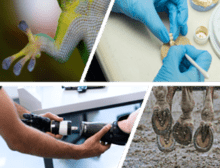
More recently, we have invested in researching joining of biological and bio-based materials and thus have established a dedicated research group in this subject, seeking to make use of all our knowledge and experience in the field of joining to address new problems. We have previously explored the use of cork to reinforce adhesives in a functionally graded manner, seeking to improve the toughness of these often brittle materials using this naturally sourced material with unique properties.
Currently, we are still working towards more sustainable bonded structures, leading a nationally funded project (FCT) to design joints employing bio-based materials such as densified wood, cork and bio-adhesives. We have developed design methodologies for fully recyclable bonded structures which perform comparably to those made with metals or synthetic composites. We have also developed innovative bio-inspired metallic surface textures, created using additive manufacturing, which enable an increased level of adhesion.
We collaborate extensively with dentists, helping our partners develop and test new resins and substrates which maximize adhesion to human teeth and bone, while being biologically compatible and free of toxic or carcinogenic compounds.
More recently, we are undertaking and innovative research project dedicated to developing a bonding process for horseshoes, avoiding the classical methods which use horseshoe nails and can cause damage to the horse hoof. This project is fully funded by Mustad, the world leading company in the hoofcare sector. A hoof bonded to a horseshoe is shown in Figure 9, highlighting how adhesive is used to transfer stresses from the horseshoe to the hoof. Our most recent paper on this subject has been highlighted by the Biomimetics journal in its website. We are also currently writing a reference book on this subject to be published by Elsevier in 2025, titled "Bio-joining: Adhesion in biomaterials, biological adhesives and biomimetic adhesive systems", which will provide a comprehensive and up to date summary of the state of the art in this field.
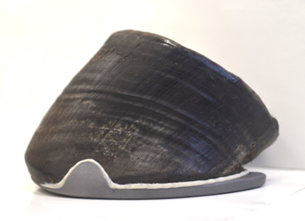
To support cooperation and the sharing of knowledge in this specific field I have established the International Conference on Bio-joining (BJ), which had its first occurrence in December 2024.
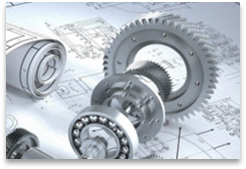
Since most of the research carried out in the group involves an important experimental component, the group has naturally developed competences in the development of advanced testing equipment. By involving students and professors in this development process the group has been able to produce complex machine designs, including advanced testing machines able to precisely characterize materials under extreme conditions. These include torsion loads, strain rate, creep, fatigue and extreme temperatures. We are currently undertaking the design and manufacture of an innovative machine to mechanically characterise weak snow layers, which will provide crucial data to support investigation on the formation and the avoidance of avalanches.
We are also designing a novel equipment to fully mechanically characterize the strength and fracture properties of adhesives in a single test, obtaining four different properties in a single go. This represents a game-changing development, of special interest for industrial users since it will provide a much faster and economical way to characterize and compare multiple adhesives. Accordingly, it is being carried out in the context of a consortium of multiple companies, which wish to implement this system in their labs.
As a whole, our machine design work has led to 15 national and international patent requests. As machine design currently represents a substantial part of our research, we have set up the Journal of Machine Design and Automation Intelligence and organize the International Conference on Machine Design (MD) to increase our impact and commitment to this field. Figure 10 shows the design and development process of a torsion machine, created for adhesive characterization.
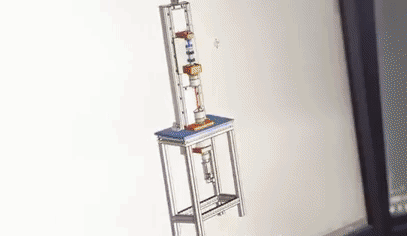
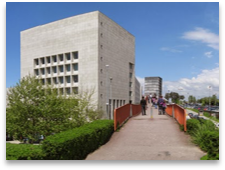
I also have a passion for the pedagogical aspects of my role as an academic and strive to provide the best conditions possible for my students in an inclusive and diverse environment. I supervised the youngest ever PhD recipient at FEUP and the first doctoral candidate from East-Timor to conclude his PhD at FEUP. I was awarded with the Pedagogical Excellence Award from FEUP in 2023 and have established a research group on pedagogical matters. We have researched the discrimination of women in mechanical and industrial engineering roles, the motivation and integration of foreign students (Brazilian and Iranian) at FEUP, analysed the research and teaching performance of the mechanical engineering teaching staff and identified misconceptions in the correlation of students learning styles, their beliefs on intelligence and academic performance.
I am particularly sensible to gender issues and played a critical role in the foundation of Beatriz Ângelo, an association dedicated to empowering women in Science, Technology, Engineering, Arts and Mathematics fields.
During 2024, I have carried out a yearlong project to create high quality videos (over 130 videos) of all my classes and made them available for free in Youtube, allowing the students to study at their own pace and enabling me to teach more engaging classes, with less theoretical exposition, packed with demonstrations and interaction with industry leaders. I have created videos for the courses on Material Sciences, Manufacturing Processes, Advanced Joining Processes and Joining in Aeronautical Applications. This project was the subject of a radio interview for a radio show (Geração Digital) dedicated to science and technology. An example of a video produced under this project is shown below in Figure 11.
Seeking to assemble world leading education researchers in a common forum, I have created the International Conference on Science and Technology Education (STE), which first took place in 2020, and I am Editor-in-Chief of International Journal of Mechanical Engineering Education.